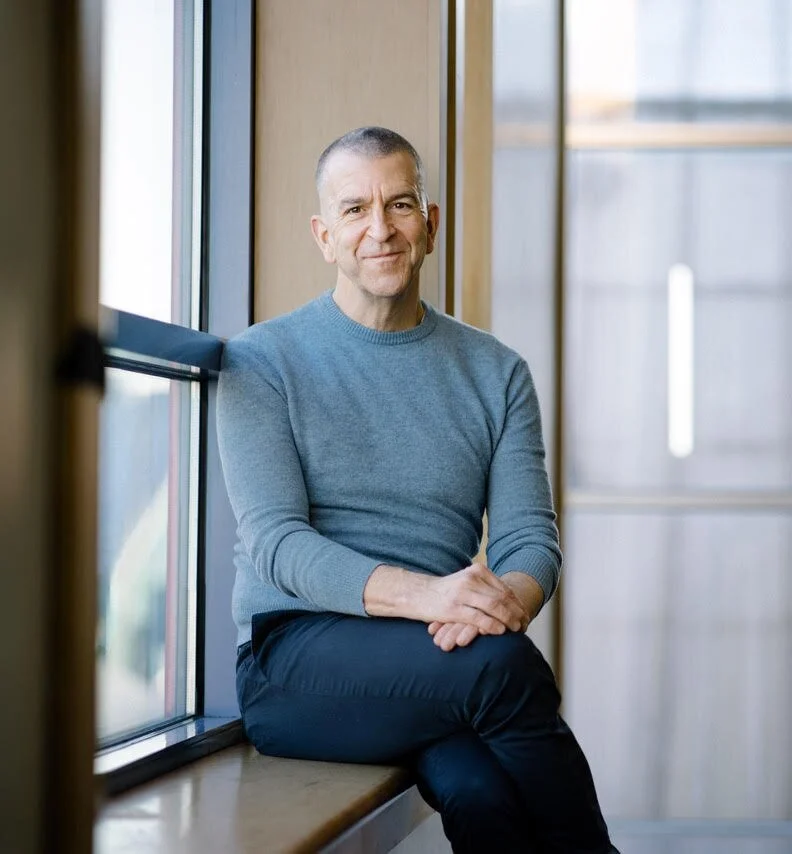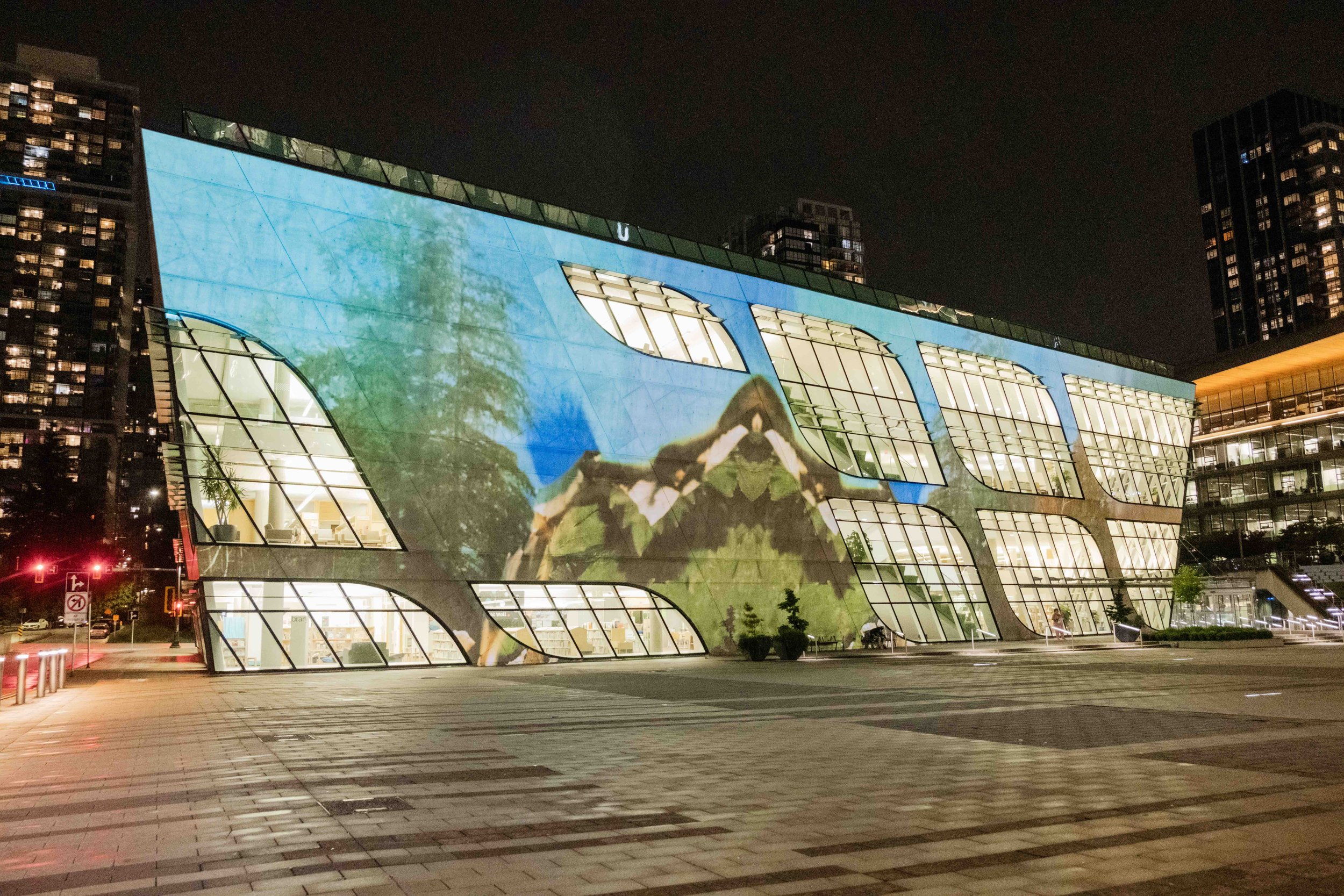Arts Umbrella steps into its future with new home on Granville Island
The arts-education centre for young people officially soon opens the doors to its new building, complete with theatre, pottery wheels , exhibition space, dance studios, and more
Arts Umbrella opens the doors to its new space on Granville Island on April 10. Photo by Kevin Clark Studios
WHEN PAUL LAROCQUE, president and CEO of Arts Umbrella, opens the door to one of six dance studios at the organization’s new home on Granville Island during a tour with Stir, he points the two ballet barres—there’s a lower one for little dancers—as sunlight spills in through floor-to-ceiling windows onto the sprung wood floor. A baby grand piano sits in one corner; there’s one in every dance studio for live accompaniment, a critical component of the internationally recognized program. He sums up the space in two words: “It’s Juilliard.”
Walking through the four-storey, 50,000-net-square-foot building brings to mind the kind of amenities you’d find at the famed arts school at Lincoln Center in New York City. There’s the costume room that stores thousands of outfits—look: There are tin soldiers’ uniforms from the Nutcracker!—in a suspended system resembling that of a professional dry cleaner. There’s the 132-seat theatre. There are the pottery wheels (a first for Arts Umbrella) and two large kilns in a spacious ventilated ceramics studio; a darkroom for processing actual photographs; a green room and blue room; a backstage room with makeup mirrors and stations; gallery-like exhibition space; and so much more.
It still astonishes Larocque that this is all part of Arts Umbrella’s new base in the former home of Emily Carr University. The non-profit arts education centre for children and youth aged two to 22 officially opens its doors on April 10. In addition to expanded space, the organization will for the first time be able to host on-site performances and exhibitions presented by young people in art and design; dance; and theatre, music, and film.
“I’m astounded—having a state-of-the-art building of this size, and for mixed use, all for young people in arts education is a model that, quite frankly, we have not seen anywhere in the world,” Larocque says. “And it says something about what a community can do to support the important role that arts education plays in our communities for the health of the entire community.
“There are spaces that are for young kids as little as two to spaces for pre-professional, post-secondary dance students up to 22, who may be coming from Japan or the United States or Europe to train here, and everything in between, at all levels of engagement, with bursaries and scholarships available to students to come here, and about 200 instructional staff who will be working through this building,” he says. “Having the theatre; having the opportunities with more space to bring schools in; the new programs that we're developing—for example, with Microsoft, for high-school students that remove all the barriers so that they can learn about gaming in a really intensive way… We’re just so proud and so excited to be a part of something that is really, on a national scale, and even internationally, so monumental.”
Arts Umbrella reaches more than 24,000 young people every year, with more than 80 percent served through bursaries, scholarships, and donor-funded programs. Larocque emphasizes that a crucial part of its programming is going out into community, engaging with kids at neighborhood houses, community centers, and health-care facilities throughout Metro Vancouver; that’s only going to grow.
The new facility, however, triples Arts Umbrella’s current physical space. Within three to five years, the new building is projected to welcome 15,000 young people each year, including increased access for vulnerable children and youth and ongoing initiatives like distance learning, bursaries, and programs reaching remote and Northern areas and Indigenous communities.
Moving into the former Emily Carr University venue is a homecoming for Arts Umbrella, which first started out as a test project in the False Creek Community Centre. It then moved to a former nail factory, which has had several small expansions over the years. But demand has been so great that the organization has been bursting at the seams.
“That we get to stay on this island is amazing, not only for us, but because of the scope of this project, it really speaks to a revitalization of the anchor educational, cultural institution on the island,” Larocque says.
Arts Umbrella’s new facility has six soundproof dance studios. Photo by Kevin Clark Studios
He’s swift to note that all three levels of government supported the project. In November 2017, the Province of British Columbia confirmed the organization would move into the former South Building of Emily Carr University. The following spring, the Department of Canadian Heritage announced $7 million in funding from the Canadian Cultural Spaces Fund to support the new facility, with the Province contributing an additional $1.4 million.
Arts Umbrella has secured close to $35 million toward its capital campaign and endowment fund goal of $37 million, which includes additional support from the Department of Canadian Heritage through the Canada Cultural Investment Fund. Individuals, businesses, foundations, and others across the country have donated funds to see the project to completion.
Arts Umbrella president and CEO Paul Larocque. Photo by Albert Law
Initially designed by Patkau Architects in 1995, the building’s repurposing was led by Henriquez Partners Architects and consulting companies BTY Group (project management); ITC Construction Management Integral (mechanical); Glotman Simpson (structural); Nemetz (electrical); DWD (theatre design); and BKL (acoustical design). Furniture like the bright blue cube-like stools (aka “puffs”) in the main foyer, where gallery style exhibitions can be held, are from Inform Interiors.
There’s high-tech everything, from an AtmosAir ionization system that naturally filters pollutants from the air to top-of-the-line soundproofing between dance studios and floors. The entire space is wheelchair accessible; washrooms are trans-friendly; changerooms are universal; and there are little but important details like sinks built low to the ground for small kids to easily wash their hands.
What else will creative youth find in the new space? Four theatre, music and film studios with specialized technical and audio equipment; and 10 art and design studios, including a media hub and digital print shop (think graphic novels), along with aforementioned ceramics studio and photography darkroom.
There’s also a dedicated workshop area for woodworking, stagecraft building, and fabrication.
“In some cases, the building inspired future growth of our program,” Larocque explains. “Industrial design is a huge part of the program at Emily Carr University, and so there was this amazing space with fabrication shops and spraying rooms, so we decided we should develop a program. And so the stagecraft program is going to be an extension of our architecture program, where people will actually be able to build the models. When you think of the film industry, and creating that ecosystem, it’s not only for young actors and filmmakers, but for others who will now also have the skills starting at a very young age.”
Photo by Kevin Clark Studios
Some of the studios and creative spaces have private terraces with views of parts of Granville Island and False Creek. The theatre, which has an adjoining expansive terrace, has a 1,500-square-foot stage, large enough to accommodate a full-size dance company.
“In a city that is really needing theatre space, for young people to have this as their stage is incredible,” Larocque says. “We have extensive school programs where, you know, our troupes might do James and the Giant Peach for the elementary kids and Henry the Fifth for high school. We have a donor program that ensures that every Metro Vancouver class gets here for free, buses paid for. Whereas in the past we have been booking theatres for three-weeks runs, we will be able to do even more here and have people come in for talkbacks with the actors and the dancers.”
Artist-in-residence programs will exist, giving young people the chance to engage with and learn from artists who participate in international events. Arts Umbrella’s relationship with Electronic Arts continues, focusing on animation, while its plans with Microsoft, for 2022, will focus on coding and gaming.
Larocque, who previously worked at Arts Umbrella before spending 11 years at Vancouver Art Gallery, returning to the arts education centre for youth in 2016, says the collective push to bring the organization to its new home is overwhelmingly heartening, particularly given the recent pandemic-related challenges. The project’s fruition is emblematic of what it means to be an artist, he says.
“That sense of courage and empathy; critical thinking skills, problem solving, and that creative spirit —these are such important things that we need more than ever,” he says. “I don’t think there’s ever been a time when it’s been more recognized, the role that the arts play in health and mental health of a community. When it’s been taken away, then you realize how important it is. This is a celebration of important role that arts and arts education play in a community.”
















